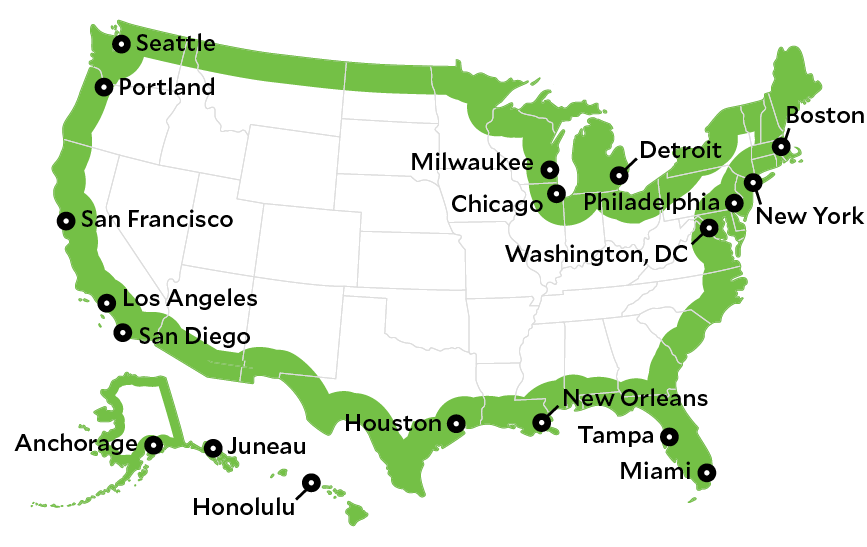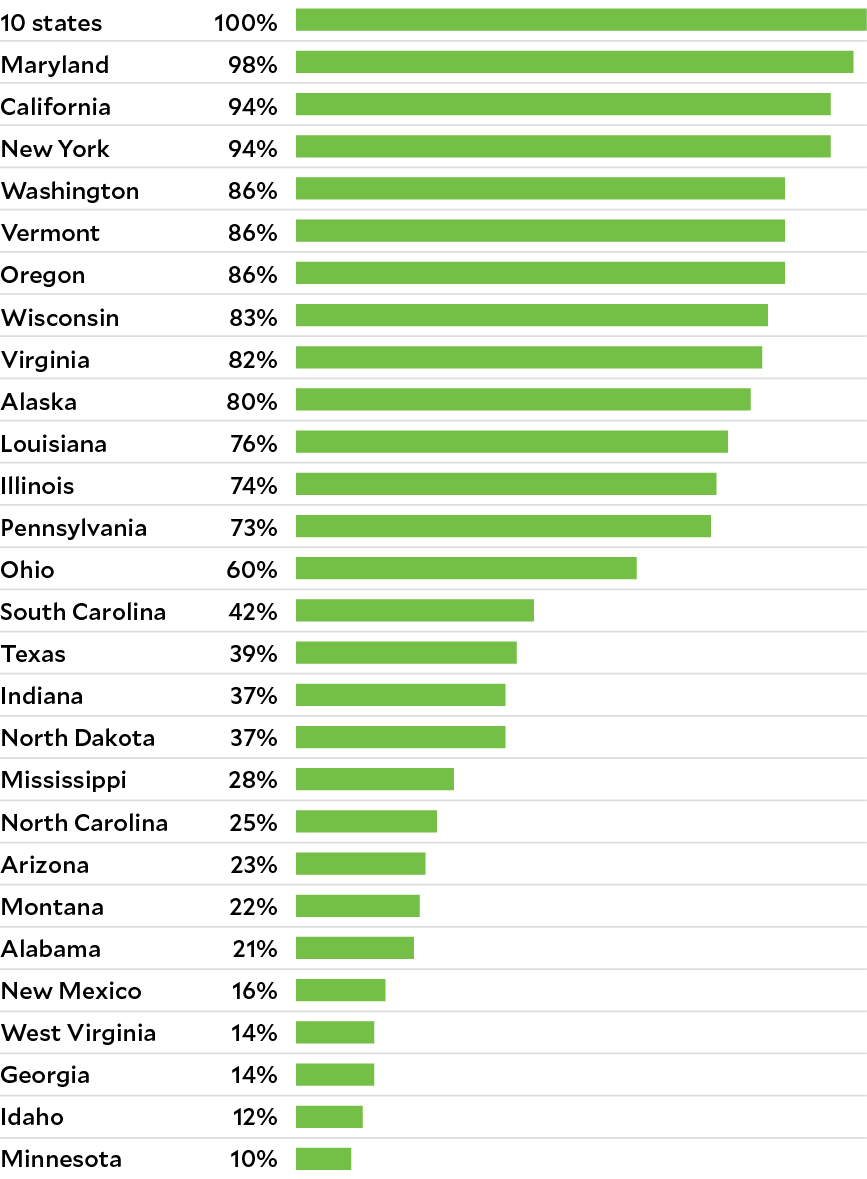Border Creep
For our September+October issue, we investigated the Border Patrol’s sharp growth, its troubling record on civil liberties, its culture of impunity, and its role in shaping the current political moment—one that echoes the anti-immigrant fever that led to the agency’s creation a century ago. Read the whole package here.
The Border Patrol’s jurisdiction isn’t confined to southwestern deserts or isolated northern checkpoints: Federal law empowers agents to board vehicles and vessels “within a reasonable distance from any external boundary of the United States,” whether inland or offshore. “Reasonable” is 100 miles as the crow flies—meaning some 200 million people live within an expansive border zone.
Approximately 60 percent of Americans live within the 100-mile border zone

37 states have at least some of their population covered by the border zone

A CBP manual outlines 21 “articulable facts” agents can use to justify stopping a vehicle in the border zone, including if it:
- is close to the border
- is on a known smuggling route
- could have been trying to avoid a checkpoint
- appears to be heavily laden
- is from out of the area
- looks unusual in some way
- appears to have been altered or modified
- has a covered cargo area
- is being driven in an erratic or unsafe manner
- looks as if it has recently been driven off-road
- is coming from an area of a sensor alert
Or if the vehicle’s driver and/or passengers:
- avoid looking at the agent
- are paying undue attention to the agent’s presence
- try to avoid being seen or exhibit other unusual behavior
- slow down after seeing the agent
- appear dirty